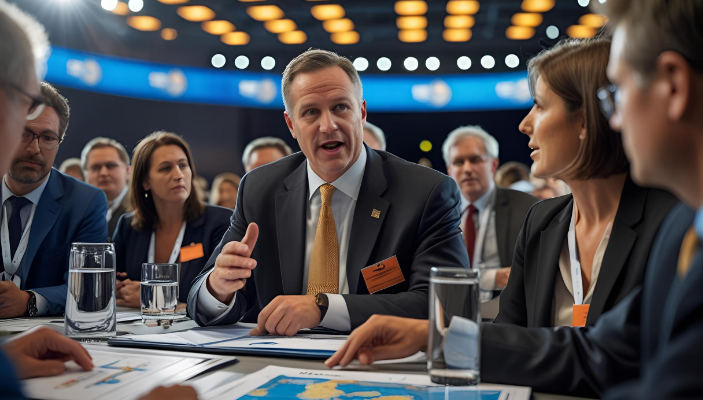Every year, as hurricane season approaches, the Federal Emergency Management Agency (FEMA) ramps up efforts to protect lives and property across vulnerable regions of the United States. At the heart of this effort is David Richardson, a seasoned FEMA official known for his leadership in emergency management and disaster readiness. His work has been instrumental in shaping how FEMA prepares for and responds to hurricanes, helping communities reduce risk and recover more efficiently.
This article provides an in-depth look at Richardson’s role at FEMA and the broader framework FEMA uses to manage the annual hurricane season.
Who Is David Richardson?
A Leader in Emergency Operations
David Richardson serves in a key leadership role at FEMA, particularly involved in response coordination, logistics planning, and strategic community outreach. With a background in crisis response and public safety, Richardson has spent years building efficient protocols to help FEMA scale its operations before, during, and after natural disasters. He regularly collaborates with local governments, state agencies, and nonprofit partners to improve disaster resilience.
Grounded in Community-Focused Strategy
Unlike a purely bureaucratic approach, Richardson emphasizes community-specific planning and data-driven assessments. His strategies center on strengthening local response capabilities so that towns and cities can act swiftly even when federal teams are still mobilizing.
The Core of FEMA’s Hurricane Season Planning
Preparedness Starts Months Ahead
While hurricane season officially starts in June, FEMA begins preparing as early as January. Under Richardson’s guidance, the agency rolls out internal risk assessments, reviews historical weather trends, and updates regional emergency response plans.
Key activities include:
-
Reviewing GIS-based hazard maps
-
Pre-positioning supplies like food, water, and medical kits
-
Coordinating training exercises with regional partners
-
Engaging in risk communication campaigns in high-impact zones
Emphasis on Hazard Mitigation
David Richardson has been vocal about FEMA’s increased focus on hazard mitigation funding. Rather than waiting for disaster to strike, FEMA invests in infrastructure improvements, flood control systems, and early warning networks. Programs like Building Resilient Infrastructure and Communities (BRIC) have been central to this proactive approach.
Community Engagement: The Heart of Readiness
Clear Communication Before the Storm
One of Richardson’s top priorities has been improving how FEMA communicates with the public. Through multilingual outreach, mobile alerts, and coordination with local media outlets, FEMA ensures that residents understand the risks and what actions to take.
Community outreach tools include:
-
The FEMA App with real-time alerts
-
Social media updates with geo-targeted information
-
Public town halls and preparedness fairs
Richardson stresses the importance of meeting people where they are—digitally and physically. “We’re not just preparing for hurricanes—we’re preparing people for hurricanes,” he has said in past briefings.
Special Focus on Vulnerable Populations
Under Richardson’s leadership, FEMA has expanded its support to people with limited mobility, chronic health issues, or language barriers. The agency works with local nonprofits to create customized evacuation plans, increase shelter accessibility, and ensure continuity of care during displacement.
Response Protocols Once a Storm Hits
Tiered Mobilization System
When a hurricane makes landfall, FEMA activates a tiered response system. Richardson plays a crucial role in overseeing these activation levels, which determine the flow of resources and personnel to the affected zones.
Steps include:
-
Situation analysis from the National Hurricane Center
-
Coordination with state Emergency Operations Centers (EOCs)
-
Deployment of Incident Management Assistance Teams (IMATs)
-
Establishment of Disaster Recovery Centers near impact areas
Richardson has helped streamline these steps to reduce duplication and enhance interagency coordination.
Rapid Relief Logistics
FEMA now uses a combination of predictive analytics and real-time logistics tracking to ensure that emergency supplies arrive within hours, not days. Warehouses across the Gulf Coast are stocked with essentials, and FEMA’s contracts with private-sector freight carriers ensure rapid movement of goods.
Richardson advocates for continuous improvement through post-response evaluations, identifying bottlenecks and closing gaps in logistics performance.
Recovery and Long-Term Support
Bridging the Gap Between Emergency Aid and Rebuilding
Hurricane recovery doesn’t end when the storm clears. Richardson and his teams stay involved through Public Assistance programs, individual disaster loans, and small business support initiatives. FEMA also partners with HUD and SBA to offer financial assistance during the rebuilding process.
Efforts are aimed at:
-
Debris removal
-
Infrastructure repairs
-
Temporary housing
-
Mental health and social services
Data-Driven Resource Allocation
Post-disaster, FEMA’s teams under Richardson analyze data collected from damage assessments, insurance filings, and community surveys. This allows for more accurate distribution of resources and avoids overspending in areas with minimal damage.
Technology and Innovation in Hurricane Response
Smarter Forecasting Tools
David Richardson supports the integration of machine learning models and satellite-based impact forecasting to improve storm response accuracy. These tools help FEMA predict not only storm paths but also how communities will be affected based on socioeconomic data, building types, and land elevation.
Use of Drones and Remote Sensors
FEMA has expanded its use of drones for damage assessments in hazardous areas where it’s unsafe for staff to enter. These drones send real-time data to command centers, allowing Richardson’s teams to adjust support plans without delay.
Conclusion
David Richardson’s leadership at FEMA reflects a strong commitment to preparedness, collaboration, and data-informed planning. His approach has helped FEMA evolve into a more agile, community-centric agency capable of facing the increasing threat of severe weather events.
As the next hurricane season unfolds, Richardson’s impact will continue to shape how FEMA not only responds to storms but prepares Americans for what lies ahead—with the right information, tools, and local engagement to weather any crisis.

